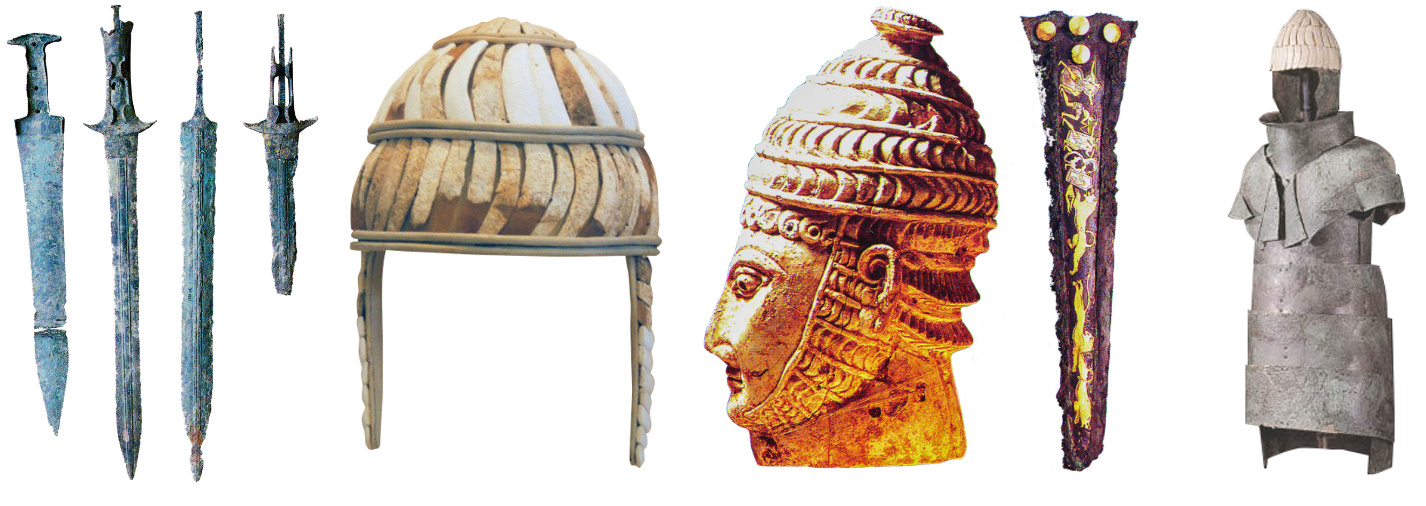Archeologists since Schliemann and Dörpfeld were interested a lot in weapons and armor. It is accepted by the researchers that Homer's Iliad has many information on 2,000 B.C.E. (around when the Trojan War happened). Among the findings from that period (Mycenaen Period) the most known war tool is a bronze sword which has a silver sword handle. In the Iliad, two times are mentioned about such a sword. In one time, Achilles talks about such a sword supposed to be given to the first of the games organized in honour of the death Patrokolos. This sword, which fit to the archeological findings inventories, is known only from the findings of 15th century B.C.E. After that in 7th century B.C.E., (after Homer) similar swords fit to these descpriptions appear again. In Mycenaen graves, a lot of sword and daggers are found who fit to the description of "inlaid silver".

Another Mycenaens remnants in the Iliad are the chariots. In Mycenaean frescos and grave stelai many figures are found which fit descriptions in the Iliad. But we also have to add that the chariot figures are also found in previous periods, in Egypt and in Mesopotamia. The one man chariots in the Iliad correspond with with the archeological findings. The most important finding -an armor made from hammered bronze- with regard to the descriptions about war dresses in the Iliad is revealed in Dendra excavations on Midea region, which is not far from Mycen and Tiryns region. Armor consists of many bronze plates to protect the chest, neck and shoulders. Besides this finding, also some helmet parts are found to protect the head and the feet. This kind of helmet, which is called "boar's tusk helmet" because of the boar tusks on it, are found in many areas of Greece sometimes as an archeological finding and sometimes as portrayed in a painting. This helmet, which seems widely used during early Bronz Age, is described in the tenth chapter of the Iliad, as an old war tool remained to Odysseus.
Trojan War
- 41 Did the Trojan War really happen?
- 42 When did the Trojan War happen?
- 43 What was the reason of the Trojan War?
- 44 Who are the sides of Trojan War?
- 45 How did the Trojan War end?
- 46 Who are the most important characters of Trojan War?
- 47 How many years did Trojan War last?
- 48 What happened after Trojan War?
- 49 Which weapons were used in Trojan War?
- 50 Are there any graves of the heroes of Trojan War?